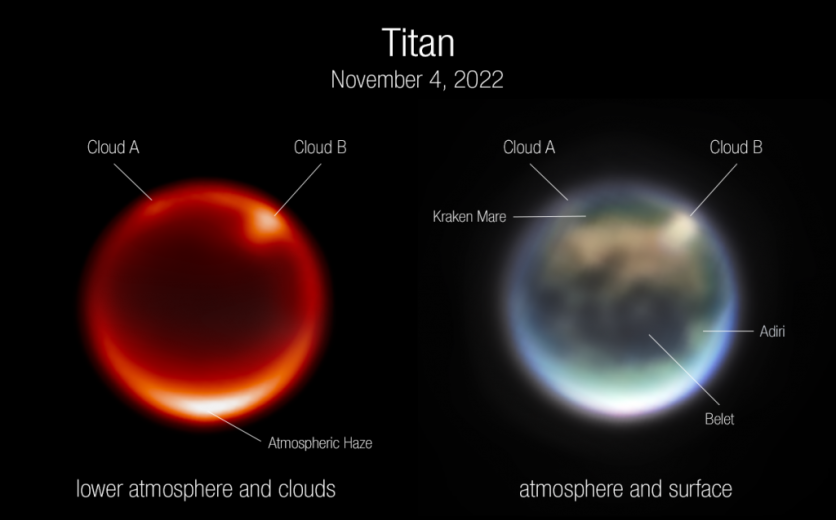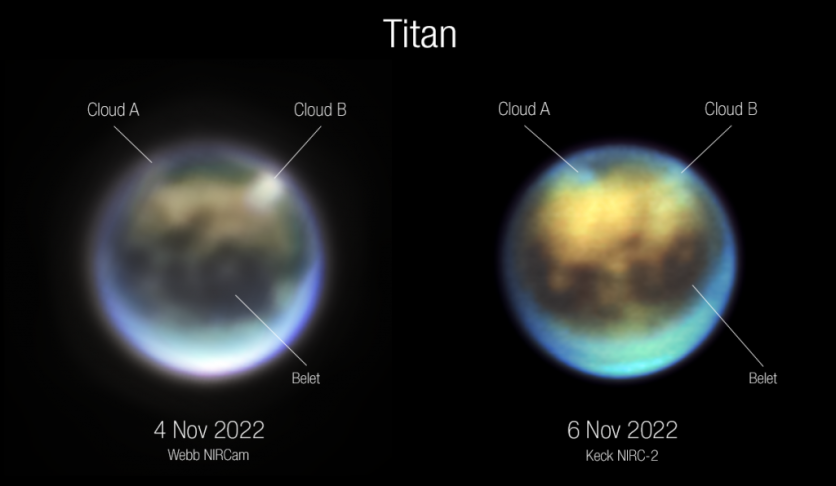NASA's James Webb Space Telescope recently captured the strange and massive moon of Saturn "Titan" - as its name implies, it is the planet's largest Moon.

The Strange Titan
The space agency noted that Titan is the sole moon in our solar system with a thick atmosphere. More interestingly, it is the only planet or moon beside Earth that contains bodies of water such as rivers, lakes, and oceans.
Suffice to say, planetary scientists were "over the moon" when Webb sent these images back to Earth.
But it is also worth noting that, unlike Earth, Titan's lakes and rivers are not exactly made of water. Instead, it is made up of hydrocarbons such as methane and ethane.
NASA has spent years waiting to use Webb's powerful infrared sensitivity to examine Titan's atmosphere, especially its bright and dark patches, strange weather patterns, and gaseous makeup.
This Saturnian lunar object has piqued the interest of scientists for a very long time. They have been very keen to learn more about Titan's past and future, including questions about whether it always had an atmosphere.
NASA said that ultimately, Webb's images delighted them with the information it provided.

Read Also : NASA's James Webb Space Telescope Snaps a Chaotic, Disturbing Connection Between Two Galaxies
An Intriguing Huge Cloud
The near-infrared camera on board the Webb spacecraft, known as the Near-Infrared Camera or NIRCam, quickly provided NASA with evidence that a bright spot seen in Titan's northern hemisphere was actually a huge cloud.
Soon after, another cloud was spotted by NASA. Discovering clouds confirms long-held climate model predictions that clouds would easily grow in Titan's mid-northern hemisphere during its late summer when the surface is heated by the Sun.
NASA then contacted its partners to ask for further observations from the Keck Observatory in Hawaii.
The objective was to explore Titan from its stratosphere to the surface to detect the clouds that Webb had observed. The agency declares that the observation was a complete success.
NASA also tapped the support of atmospheric modeling specialists to analyze the Keck data.
Juan Lora from Yale University, one of the experts, said: "Exciting indeed! I'm glad we're seeing this since we've been predicting a good bit of cloud activity for this season! We can't be sure the clouds on November 4th and 6th are the same clouds, but they are a confirmation of seasonal weather patterns."
The researchers also gathered spectra using Webb's Near-Infrared Spectrograph (NIRSpec), which provides access to several wavelengths that are otherwise blocked by the Earth's atmosphere for ground-based observatories like Keck.
The team is still processing the data but they hope that it will help them better understand the makeup of Titan's lower atmosphere and surface and exceed the observational capabilities of the Cassini spacecraft.
Related Article : NASA James Webb: WASP 39b Exudes More Elements on its Atmosphere, New to Exoplanets

ⓒ 2026 TECHTIMES.com All rights reserved. Do not reproduce without permission.




